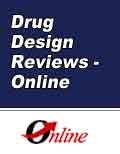Abstract
Traditional approach of natural products chemistry-collection, bioassay, isolation, structure elucidation is still effective in discovering new bioactive substances. Chemical ecological aspects of living organisms give useful consideration in managing reasonable collections and bioassays. Since diversity of species gives structural diversity of secondary metabolites, collection of unexplored organisms is one of effective approaches in finding new compounds. Development of new bioassay is also important for drug discovery. This review presents a bioassay method, which detects deformations of mycelia germinated from conidia of Pyricularia oryzae, and application to culture broths of marinederived fungi and Chinese traditional medicines. The bioassay was developed using an antimitotic fungal metabolite rhizoxin, the causative toxin of rice seedling blight, isolated from Rhizopus chinensis. Antimitotic and antifungal agents revealed morphological deformations on hyphal growth from conidia such as curling, swelling, hyper-divergency, beads shape, and so on. This bioassay method is cheap, quick, and easy to handle, and can be applied to high throughput screening and quantitative estimations. So far 30 new compounds have been isolated from five fungal culture broths and seven Chinese medicinal plants. Some of new and rediscovered compounds are expected to become drug candidates as a new class of antitumor agents.
Keywords: antimitotic substance, antifungal substance, bioassay, pyricularia oryzae, marine-derived fungi, chinese
 1
1

